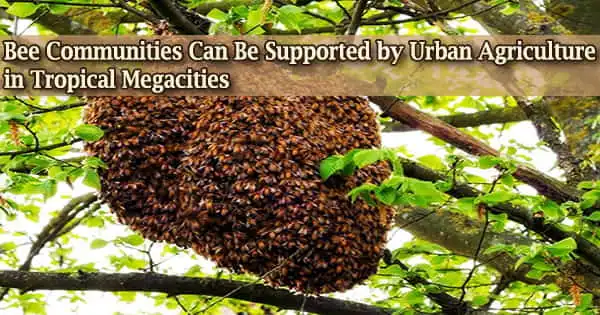The biggest danger to biodiversity is urbanization. However, little is known by scientists about how urbanization affects ecosystem services and biodiversity in tropical parts of the Global South.
In collaboration with the University of Agricultural Sciences of Bangalore in India, an international research team led by the German universities of Göttingen and Hohenheim looked into the effects of urbanization on bee communities in smallholder farms in and around Bangalore, a city in South India with a population of more than 13 million.
Contrary to findings from temperate locations, they discovered that social bees, such wild honey bees, suffered more than huge solitary bees or those that nest in cavities. Native flowers close to farms and crop diversification can support the survival of bee populations.
The findings were published in the journal Ecological Applications.
The researchers tallied more than 26,000 individual bees from 40 species during a thorough field survey of bees on vegetable fields spanning throughout rural and urban habitats.
The scientists were able to determine how the percentage of sealed surfaces and buildings in urban areas influenced bee communities by combining the data with remote sensing from satellites. They also compared bees that use various nesting locations and have various social structures and levels of mobility to examine how the various bee species reacted to the settings.
“We demonstrated that the way bees responded to urbanization were specific to certain traits. For example, bees nesting in cavities actually benefited from urbanization as they can nest in small cracks and cavities on buildings,” says first author Gabriel Marcacci, PhD student in the Functional Agrobiodiversity group at the University of Göttingen.
He continues, “Moreover, we found that ground-nesting bees, which are usually considered the losers in urbanization, find ample nesting opportunities in tropical megacities because enough bare ground is still available, mostly in the less developed neighbourhoods.”
We demonstrated that the way bees responded to urbanization were specific to certain traits. For example, bees nesting in cavities actually benefited from urbanization as they can nest in small cracks and cavities on buildings. Moreover, we found that ground-nesting bees, which are usually considered the losers in urbanization, find ample nesting opportunities in tropical megacities because enough bare ground is still available, mostly in the less developed neighbourhoods.
Gabriel Marcacci
Professor Ingo Grass, Department of Ecology of Tropical Agricultural Systems University of Hohenheim, explains:
“Our results differ in part from what is often found in cities in temperate regions, which shows that we cannot generalize from field studies carried out in Germany or other countries of the Global North.”
Another contrasting result is the strong decline of social bees with urbanization.
“This result is particularly worrying because in the tropics, social bees such as wild honeybees and stingless bees form large colonies and are essential for crop pollination,” explains Professor Teja Tscharntke.
The study also showed that farm management measures like crop diversity or the presence of native wild plants in and near vegetable fields have a favorable impact on bee colonies.
Professor Catrin Westphal, head of Göttingen University’s Functional Agrobiodiversity group, concludes, “Our results suggest that urban agriculture can promote bee communities if managed in a sustainable manner and could combine to support wild bee conservation and food production in and around cities.”





